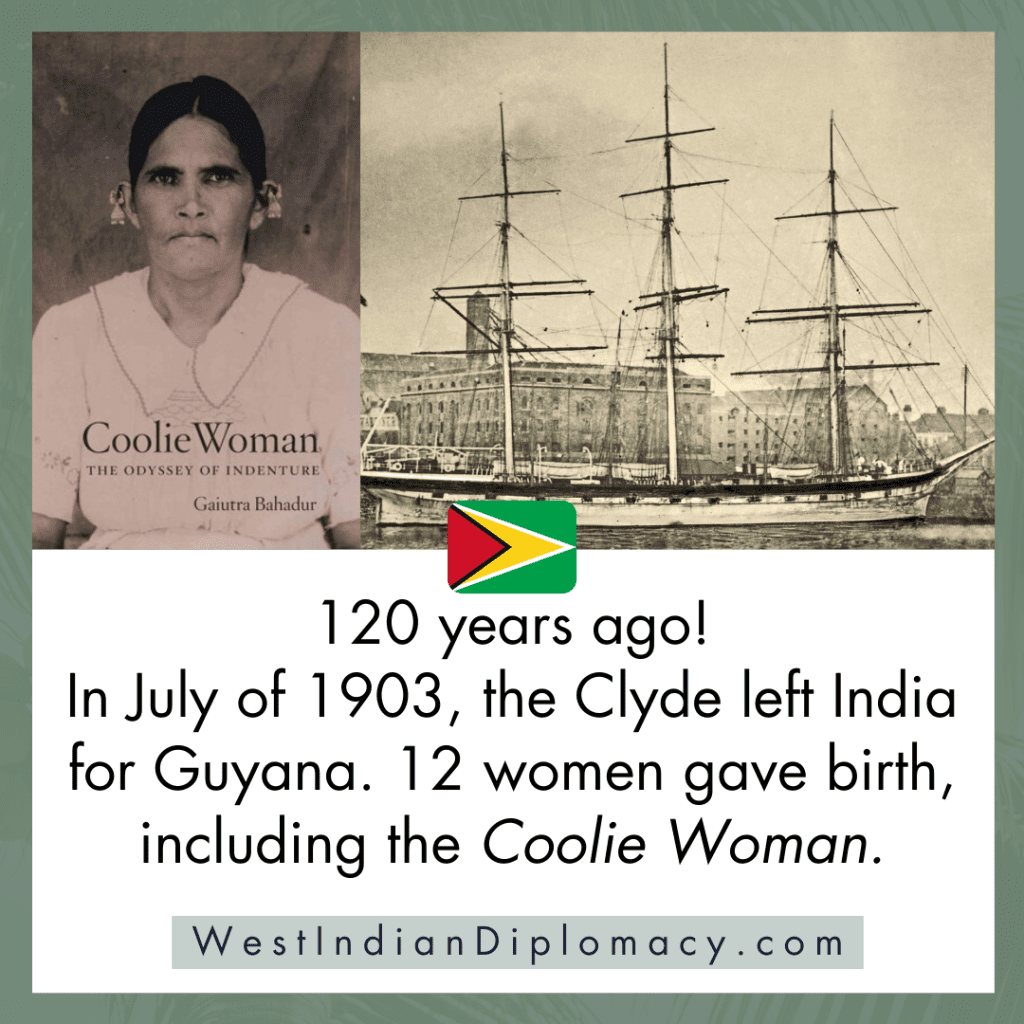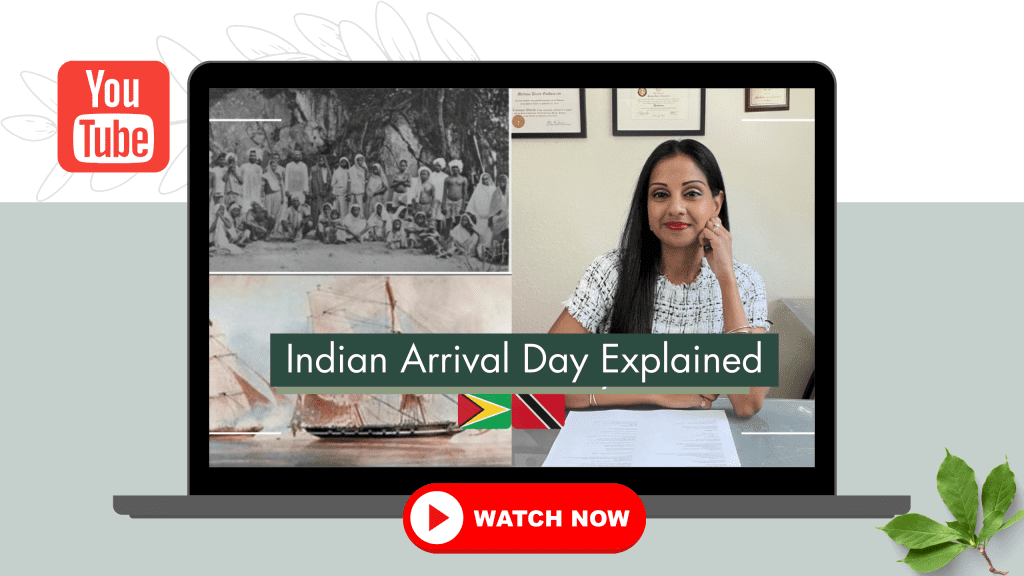What ships transported Indian indentured servants to Trinidad and Guyana? The Clyde (July 1903)
This article is about July 1903 ship, the Clyde, and ships that transported Indian indentured servants to Trinidad and Guyana.

What ships transported Indian indentured servants to Trinidad & Guyana? The Clyde is one of the ships that came from India to Trinidad and Guyana with Indian indentured servants.
The Clyde first launched on July 25, 1894, and was primarily used for the transportation of Indian indentured servants to the British colonies.
Nine years later, in July of 1903, the Clyde also journeyed to Guyana. July was supposedly the worst month to leave India because of the monsoons. We do not know many details of this trip because the British Colonial Office destroyed the report.
However, some information about the Clyde’s 1903 journey to Guyana has been made available thanks to Gaiutra Bahadur’s book, Coolie Woman. Her great-grandmother, Sujaria, was on that ship as a last-minute member registered in Faizabad on the day that the ship was originally set to sail.
Coolie Woman is Gaiutra Bahadur’s account of tracing her Guyanese roots back to India through Sujaria. Coolie Woman also contains valuable information on the journey and plight of other Indian indentured servants in Guyana, Trinidad, and the greater Caribbean.
Bahadur was able to uncover these details about the Clyde’s 1903 journey from India to Guyana:
- 560 adults sailed on this ship.
- There were 171 Indian indentured women servants on the ship.
- 16 women were pregnant, and 12 of those women gave birth, including Sujaria. Sujaria’s son was born premature and breach (legs first). The son was able to “escape oblivion” while 4 of the babies unfortunately passed away.
- 5 men also passed away at sea from “cerebrospinal meningitis.” That is a brain inflammation that comes with high fevers, headaches, vomiting, and delirium. A ship surgeon that witnessed many episodes claimed that victims got a frightened look and cried out for their mothers and fathers.
Sujaria named her son “Lalbahadur.” Sujaria, like most Indian indentured servants, did not have a last name. “Bahadur” from “Lalbahadur” would eventually become the family’s last name in Guyana.
Sujaria’s name was also altered. It was listed as “Sheojari” on the passenger list. It was likely a very bad mistransliterated version of “Shivajaro,” meaning follower of the god Shiva in Bhojpuri.
The Clyde arrived in Guyana on November 4, 1903 at the mouth of the Demerara River.
What happened to the Clyde after it brought Indians to Trinidad and Guyana?
On November 8, 1903 the ship left for England.
The British transported 1 million Indians as indentured servants around its colonies. 500,000 of the Indian indentured servants would land in the Caribbean between 1838 and 1917.
The Clyde was owned by a Welshman named James Nourse. It is named after the River Clyde in Glasgow, Scotland. The Clyde was the last sailing ship built for the Nourse Line, and it made regular travels between India and the West Indies. The exchange was often salt and railway irons for Indian indentured servants.
The ship was resold many times and finally broken up in 1924.
Note: The woman on the cover of Coolie Woman is not Sujaria (the main heroine of the book). The captions for the pictures within the book indicate that the cover is a photo of another great-grandmother of the author.



References:
Bahadur, Gaiutra. The Coolie Woman.
Perry, F. W. (1991). Nourse Line. World Ship Society. ISBN 0-905617-62-2.
Lubbock, Basil (1981). Coolie ships and oil sailors. Brown, Son & Ferguson. ISBN0-85174-111-8.
"Learn where you came from, so you can know how valuable you are."
Articles on Caribbean empowerment regarding history education and legal protections.
This article was about July 1903 ship, the Clyde, and ships that transported Indian indentured servants to Trinidad and Guyana.
By Melissa Ramnauth, Esq. | This content is copyright of West Indian Diplomacy, LLC and may not be reproduced without permission.

She runs West Indian Diplomacy, a Caribbean blog aimed at promoting West Indian history and business in the global marketplace. Melissa has been an attorney for over 10 years. She currently focuses on trademark registration, trademark searches, and office actions. She also has extensive legal experience in the areas of trademarks, copyrights, contracts, and business formations. She owns her own Trademark Law Firm that is virtually based out of Fort Lauderdale.
Please Sign Our
Petition to Preserve Our Ship Records
By Submitting this Form
This page may contain affiliate links and ads at no extra charge to you. If you purchase something from these links and ads, West Indian Diplomacy may earn a small commission that goes towards maintaining the website and sharing our history.
Book Recommendations
The First East Indians to Trinidad: Captain Cubitt Sparkhall Rundle and the Fatel Rozack
History of the People of Trinidad and Tobago
An Introduction to the History of Trinidad and Tobago
